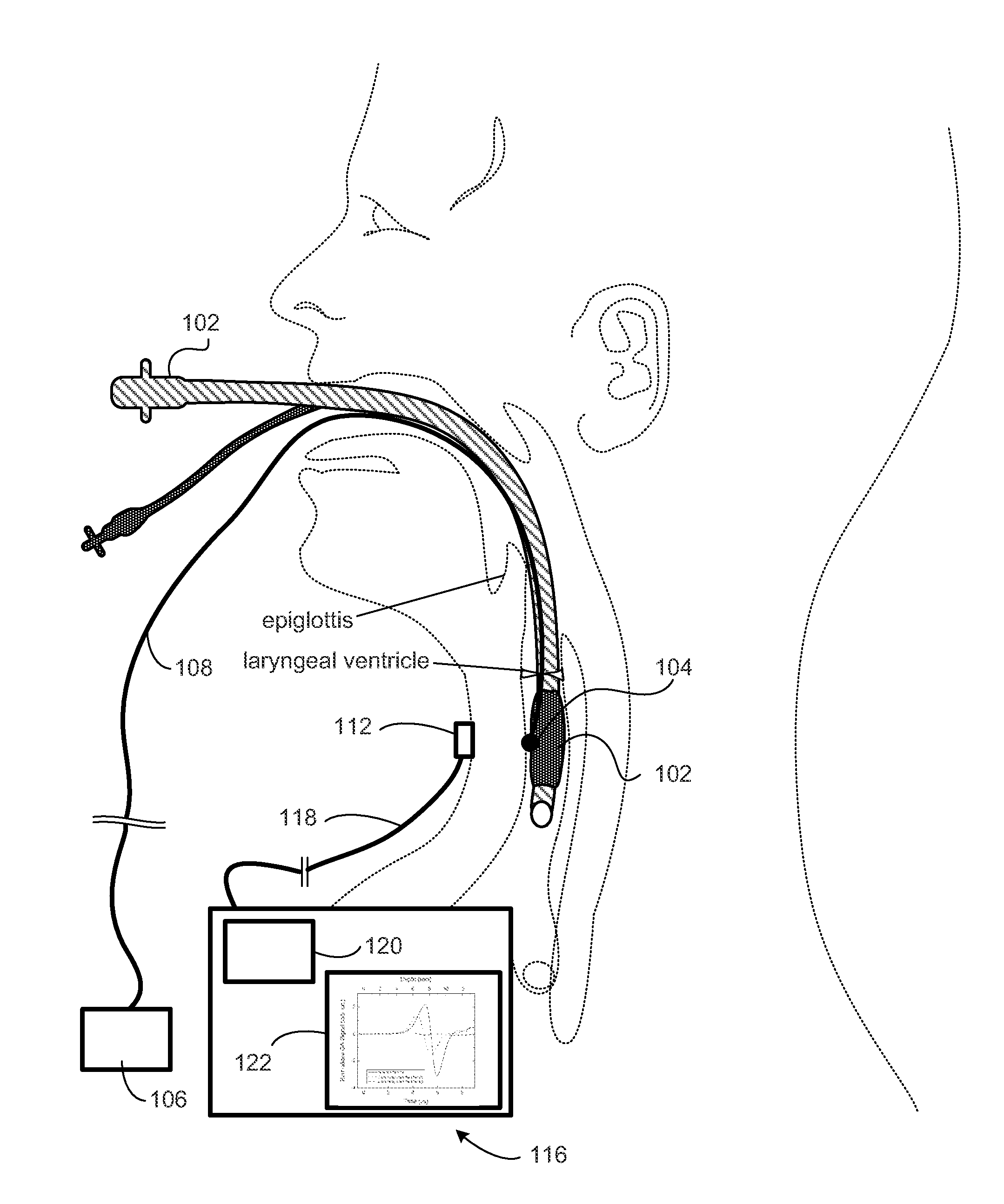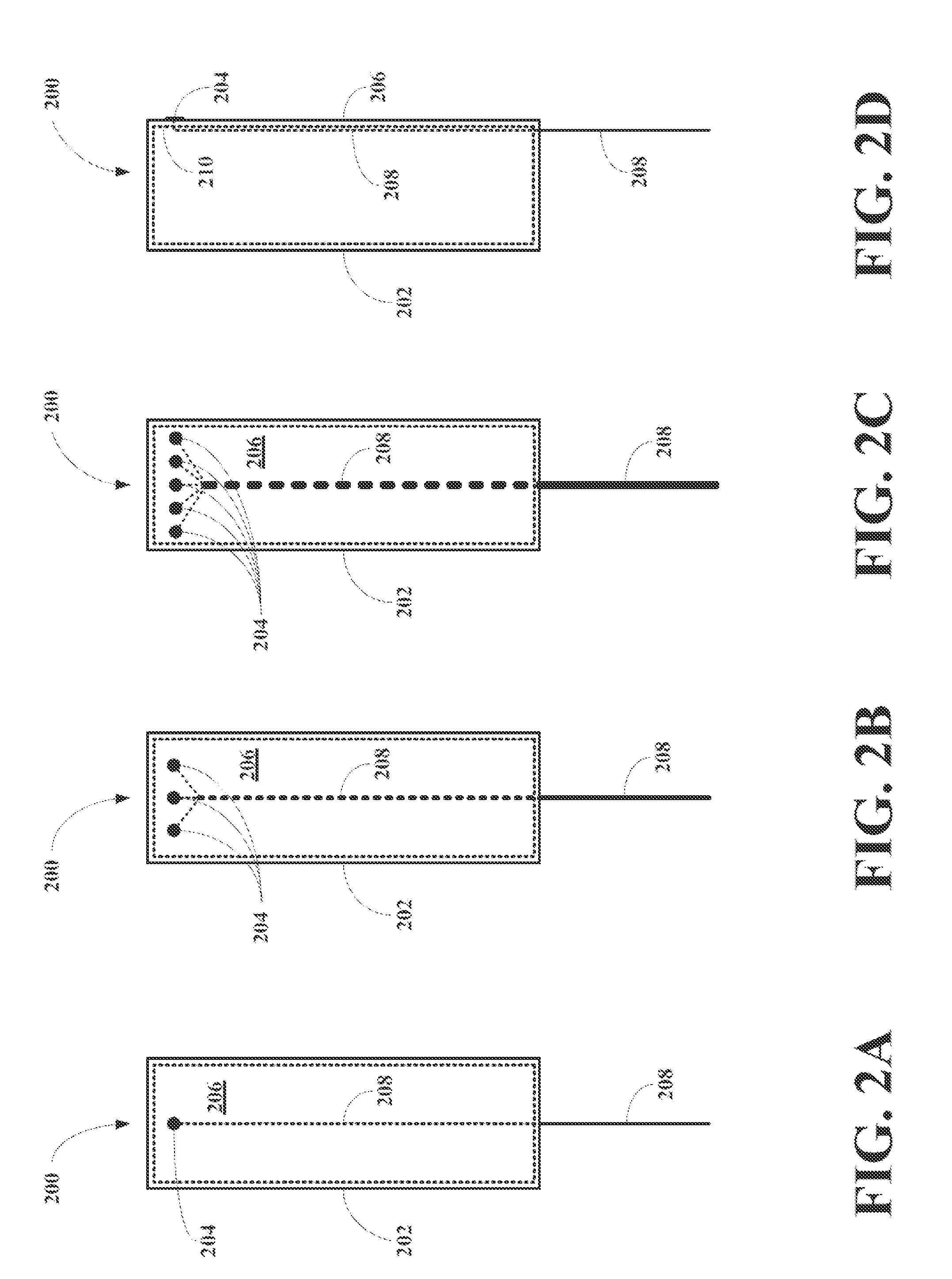Methods and Apparatus for Optoacoustic Guidance and Confirmation of Placement of Indwelling Medical Apparatus
a technology of optoacoustic guidance and confirmation, which is applied in the field of apparatus and methods for guiding and confirming the placement of medical devices, can solve the problems of affecting the placement or positioning of endotracheal tubes, and affecting the safety of patients
- Summary
- Abstract
- Description
- Claims
- Application Information
AI Technical Summary
Benefits of technology
Problems solved by technology
Method used
Image
Examples
example 1
[0056]An embodiment of an endotracheal tube apparatus as disclosed herein including a pulsed laser light source, a light conduit, a light exit port and an acoustic detector was tested to demonstrate that a signal obtained by positioning a pulsed laser light exit port within an endotracheal tube in a sheep with an acoustic detector positioned on an anterior neck to permit non-invasive accurate confirmation and maintenance of the tube location in the sheep.
[0057]Laser optoacoustic imaging combines the merits of optical tomography (high optical contrast) and ultrasound imaging (minimal scattering of acoustic waves) to yield high contrast, sensitivity, and resolution. Certain of the present inventors have developed laser optoacoustics as a technique for tissue characterization and diagnostic imaging. See e.g. Esenaliev R O, et al. “Laser opto-acoustic tomography for medical diagnostics: Experiments with biological issues”SPIE Proc. 1996; 2676: 84-90. Optoacoustic techniques utilize sens...
PUM
 Login to View More
Login to View More Abstract
Description
Claims
Application Information
 Login to View More
Login to View More - Generate Ideas
- Intellectual Property
- Life Sciences
- Materials
- Tech Scout
- Unparalleled Data Quality
- Higher Quality Content
- 60% Fewer Hallucinations
Browse by: Latest US Patents, China's latest patents, Technical Efficacy Thesaurus, Application Domain, Technology Topic, Popular Technical Reports.
© 2025 PatSnap. All rights reserved.Legal|Privacy policy|Modern Slavery Act Transparency Statement|Sitemap|About US| Contact US: help@patsnap.com



